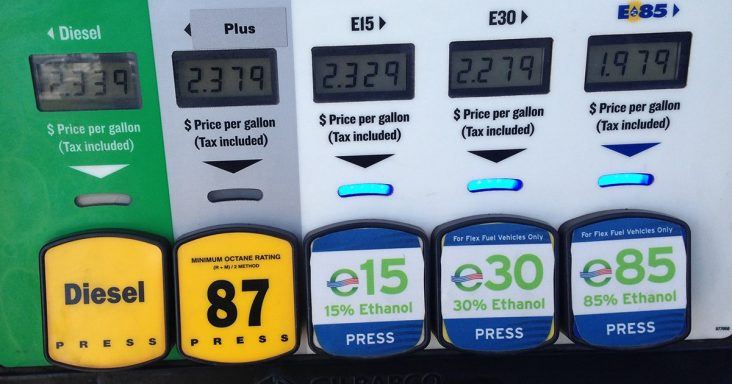U.S. exports of fuel ethanol reach record levels
by April 27, 2018 1:13 pm 380 views

The United States exported almost 1.4 billion gallons of fuel ethanol in 2017, and the previous record level of the exports was 1.2 billion gallons in 2011, according to the U.S. Energy Information Administration. U.S. ethanol imports rose slightly to 77 million gallons in 2017, from 2016. The United States has been a net exporter of ethanol for eight consecutive years.
Fuel ethanol exports have risen over the past eight years as corn production and ethanol production capacity increased faster than U.S. fuel ethanol consumption, according to the EIA. Fuel ethanol exports went to 35 countries in 2017, but more than half of the exports went to Brazil and Canada.
In the United States, ethanol is used as a blending component in the production of motor gasoline and is blended in volumes up to 10% ethanol, and known as E10. Corn is the feedstock of fuel ethanol and large corn harvests and stable corn prices have led to the rise in fuel ethanol production recently. In the 2017-2018 harvest year, the amount of corn the United States was projected to produce fell 4% to 14.6 billion bushels of corn, from the previous harvest year. However, the 2017-2018 production level was the second-highest level in history.
Fuel ethanol exports to Brazil increased to 450 million gallons in 2017 and accounted for nearly one-third of all U.S. fuel ethanol exports, according to the EIA. Brazil is one of the largest producers and consumers of fuel ethanol, but it has had supply issues recently. In the fourth quarter of 2017, U.S. exports to Brazil increased to 90 million gallons, despite the country’s 20% tariff on fuel ethanol imports of greater than 40 million gallons.
The amount of fuel ethanol the United States exported to Canada rose 5% to nearly 330 million gallons in 2017, from 2016, according to the EIA. In 2017, fuel ethanol exports to China declined 88%, from 2016, as a result of the increase in the tariff on U.S. fuel ethanol to 30%, from 5%, at the start of 2017.
The United States received all fuel ethanol imports from Brazil in 2017. Imports have been low recently as a result of increased domestic production and the preference for biomass-based diesel over imported sugarcane ethanol to meet requirements for renewable fuel programs such as the Renewable Fuel Standard and the Low Carbon Fuel Standard (LCFS) in California. Nearly all of sugarcane ethanol imported from Brazil went to California to meet the LCFS gasoline targets.
